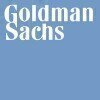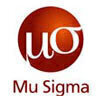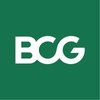Filter interviews by
Management Dynamics Management Executive Interview Questions and Answers
Management Dynamics Management Executive Interview Experiences
1 interview found

(4 Questions)
- Q1. Human resources is correct decision of the recruiters and required by firm in fill the vest policy.
- Q2. According to hr,steps in staffing, coordination,planning, and placements of the following recipient.
- Q3. Hr, developed in policies,time to time good ideas and invironmental processing by business class
- Q4. Thees are protected by business class human resources requirements.
Interview Preparation Tips
Top trending discussions






Interview questions from similar companies

Its random case discussion
Presentation to solve a case
A multidimensional case
(2 Questions)
- Q1. Who are you and what do you bring?
- Q2. Why you want to join bain?
Interview Preparation Tips

I applied via Recruitment Consulltant and was interviewed in Aug 2022. There were 3 interview rounds.

(2 Questions)
- Q1. Go through your CV and past project in details
- Q2. What challenged did you face?
(1 Question)
- Q1. Be strong on common sense
Interview Preparation Tips

I applied via campus placement at Institute of Management Technology (IMT), Ghaziabad and was interviewed in Nov 2021. There were 3 interview rounds.
(1 Question)
- Q1. The execution order of SQL Difference between where and having Difference between rank, dense rank and row Specific scenario-based queries Excel basics to intermediate
- Ans.
SQL execution order, where vs having, rank vs dense rank vs row, scenario-based queries, Excel basics to intermediate
SQL execution order: select, from, where, group by, having, order by
Where clause filters rows before grouping, having clause filters groups after grouping
Rank assigns unique rank to each row, dense rank assigns same rank to rows with same values, row number assigns unique number to each row
Scenario-based...
(1 Question)
- Q1. 1 guestimate - Number of women in IT in India Basics of Python
- Ans.
It is estimated that there are around 30% women in IT in India.
According to a study by NASSCOM, women make up 34% of the IT workforce in India.
However, this percentage drops to 17% in leadership roles.
There are various initiatives and programs aimed at increasing the number of women in IT, such as Women Who Code and Girls Who Code.
The gender gap in IT is a global issue, with women being underrepresented in the industry...
(1 Question)
- Q1. Questions from my CV and my previous work experience. I was asked some questions about my goals.
Interview Preparation Tips
- SQL
- Advanced Excel
- Python
Skills evaluated in this interview

I applied via Company Website and was interviewed in Mar 2022. There were 4 interview rounds.

(1 Question)
- Q1. Basic Information has been taken
Given some scenarios and their solution
(1 Question)
- Q1. Why I want to switch
Interview Preparation Tips
- Market Research
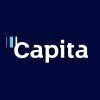
I applied via Referral and was interviewed in Jan 2022. There were 2 interview rounds.
It was good
(3 Questions)
- Q1. Why should we hire you?
- Q2. What is your family background?
- Q3. Tell me about yourself.
Interview Preparation Tips
- YouTube

Management Consultant Interview Questions & Answers
McKinsey & Companyposted on 16 Dec 2015
I applied via Referral
Interview Questionnaire
5 Questions
- Q1. What is your best academic performance? why?
- Ans.
My best academic performance was in my final year of college where I achieved a 4.0 GPA.
Achieved a 4.0 GPA in final year of college
Received highest grades in advanced courses such as Data Analytics and Strategic Management
Consistently maintained a high GPA throughout college
Demonstrated strong work ethic and dedication to academic success
- Q2. What is your worst academic performance? why?
- Ans.
My worst academic performance was in my first semester of college due to adjusting to the new environment and workload.
Struggled to balance coursework and extracurricular activities
Received lower grades in math and science courses
Learned to manage time better and seek help from professors and tutors
Improved grades in subsequent semesters
- Q3. What is your work experience?
- Ans.
I have 5 years of experience in management consulting with a focus on strategy development and implementation.
Worked with clients in various industries including healthcare, finance, and technology
Led teams in conducting market research and analysis to identify growth opportunities
Developed and presented recommendations to senior executives
Managed project timelines and budgets to ensure successful delivery
Collaborated ...
- Q4. Why MBA and not investment banking?
- Ans.
MBA aligns better with my long-term career goals and provides a broader skill set.
MBA offers a wider range of career opportunities beyond investment banking
MBA provides a more holistic understanding of business operations
MBA equips with leadership and management skills necessary for long-term success
Investment banking is a specialized field with limited scope for growth
Personal interest and passion for pursuing MBA
- Q5. Why ISB?
- Ans.
ISB offers a world-class management education with a diverse student community and excellent faculty.
ISB has a rigorous curriculum that prepares students for the real-world challenges of management consulting.
The school has a diverse student body with professionals from various industries and countries, providing a unique learning experience.
ISB has a strong network of alumni who are leaders in their respective fields,...
Interview Preparation Tips
Experience: Personal Interview questions revolved around my academic performance and about grades. The case interview started off with the following case:
Client is a no 1 boiler manufacturer in India. He is now witnessing reduce profits. Advise.
I Laid out the structure--- Client (his product lines, pricing, distribution channel), competition (change in competitors, their strategy wrt product lines, distribution), Customers (size, preferences), Industry (regulatory, new technology) and cost dynamics (fixed, variable, etc).Interviewer was happy with the structure and said he wanted hypothesis as to why is he losing profits:
• New competitors have come up with diff technology for boilers –NO
• The market size for boilers has shrunk (due to changes in the industry they have been rendered redundant)
• Price war in the industry – reduced profitability – YES
Then I explored how the competitors are offering a lower price. After delving through each item on cost structure, Supply chain, etc; it appeared that it was because the competitors used a new technology to manufacture boilers --- This tech required LESS raw material (steel) per unit of boiler because the manner in which Steel was being cut (he gave some technical knowledge) -boy….this took some time to get to…in fact interviewer helped out here !!!
Tips: Stay Confident & Cool even if you miss the above fact. Move on
and build on it. Show Energy during the interview. !!
Round: Case Study Interview
Experience: in the second interview of the first round, personal interview was entirely experience based; did not miss any line of CV on work exp (as I had fin work exp)
case: I want to start a crane leasing biz in China….estimate my annual profits for next year
I Assumed: No regulatory issues, no replacement of cranes with better equipment for 1 year
First zeroed in on city, then city space, available free space, plausible for construction next year.
Identified alternative pricing strategies—ie per diem, per contract, on/off season rates (less in rainy,etc)
Lots of numbers given (area—square kms, rates, etc)– he wanted me to calculated to the nearest dollar….
Made a calculation mistake (while using square root for area
estimation)…but keep your cool ..they are looking at approach
He then asked me to convert the final answer ($33,85,263) to the nearest pound sterling (DON’T LOSE your cool…)..I used 1.8 conversion rate to convert it (did not carry a calculator☺)))
At the end I asked few questions on M&A issues in China (I heard up on this after the interview schedule was out)..this helps impress him as he was based in the Corp Fin group in China
Round: Case Study Interview
Experience: In the first interview of the second round personal interview was more of a general feel good talk. Then the case Interview began. the case was:
Airline industry—reduced profitability
I gave the structure, identified the drivers and was beginning to explore each item ---he said that he was happy with structure and gave me another scenario where an airline had 2 options either to fly:
Brazil to US
Brazil-Argentina-US
I explored the pt to pt vs hub and spoke model….we went through the numbers and looked at the opportunity costs to finally chose the right strategy.
I also looked at non-fin aspects like strategy and future growth before choosing the option.
He asked me to list adv and dis adv of both models. I drew a model and explored that for 10 routes, pt to pt needs 45 air crafts (10 C 2) while hub and spoke needs only 10. Also identified positives and negatives in other aspects such as costs, customer perception, time, target segment impact, load factor (utilization rate), pricing, etc
Incidentally the actual opinion he said was similar to my recommendation.
Tips: Be ready for pep talk, good opportunity to create feel good
Round: Case Study Interview
Experience: In the second interview, the personal interview was more of a general talk with questions on why MBA, why ISB etc.
Case: International Courier company-losing market share
Standard structure—
• product mix (packages of all sizes), distribution network pricing,
• competition,
• customer segment (attributes they look for: time, safety of packet and prices; convenience – centers for collection-touch points),
• industry dynamics,
• cost structure (esp fixed), etc
Identified problem as local couriers eating market share due to lower costs
Recommendation:
As Fixed costs are high; increase volume business by:
• Alliances with Low cost couriers (but quality of service is a issue)
• JV s (would help as equity stake)
• Acquisitions (highlighted both positives and negatives)
Reduce costs internally (explore using excess capacity on other airlines instead of using your own airlines for low volumes)
General Tips: Keep your cool during the interview.
Keep smiling and be confident.
Try to not to goof up with calculations.
Skills:
College Name: Indian School Of Business (ISB)

I applied via LinkedIn and was interviewed in Sep 2021. There were 3 interview rounds.

About RCM Industry group
Interview Preparation Tips

Management Consultant Interview Questions & Answers
McKinsey & Companyposted on 16 Dec 2015
I applied via Referral
Interview Questionnaire
1 Question
- Q1. Personal Interview: examples of leadership experience? Your role in it?
Interview Preparation Tips
Experience: Looked at auto-components industry on my resume and said he would give me an auto-comp case.
Case: Client is a leading auto component manufacturer. It wants to increase profits in the next few years and wants to reach a target of $5 bn in revenues. It is currently at $1 bn.
I suggested there are 2 basic ways to do so:
- Increase volume
- Increase value add and thus margins (elaborated below)
Clarifying questions
Me: Asked what was the core capability of the manufacturer and
the kind of products it manufacturers.
The Interviewer (TI): Forging and forged components
Me: Geographic presence?
TI: India and some acquisitions in Europe.
Me: Is it into auto- comp outsourcing business?
TI: Yes
Me: Increase Volume as follows:
I said can we assume is it meeting demand?
Was asked to make assumptions and proceed. Now I moved into a monologue – coz I gathered that’s what he wants
Increase volume:
- So I said if we know it is lagging in demand, we should explore expansions options – add domestic capacity, acquire capacity externally – (also a increase value add option – refer below)
- Enhance product offering (all types of forged components based on core forging capability)
- Increase share of wallet ( Does a single OEM outsource all types of auto-components) ; Have we exploited any potential to cross sell – if he is buying power train (engine) components, should he also buy axle and chasis components from us
- External acquisitions: Dual shore manufacturing – have a low cost mfg base in India and China, acquire plants in Europe and America which has good customer relationships – thus improve customer intimacy by being geographically close to customer and improve share of wallet.
Increase value add:
- Any change in product mix – make more of critical safety components which provide higher margins
- Provide full end to end support – from design of components to testing – make attempts to support the entire life cycle of car platforms – this will also enhance value add and thus margins ( Explore options to acquire or build R&D centers)
- Compare costs in India and China, add capacity in China, if it reduces costs and enhances margins
Tips: Anything on your CV could be turned into a case. Spend lot of time thinking and reading about companies and industries mentioned on your CV. Whats good/bad about industry? How are companies exploring growth options and so on?
Round: Case Study Interview
Experience: Case:Client is an insurance company. They want to know how big is the insurance opportunity in India? Finally, given the size of the opportunity, what would you recommend as the next steps.
Me: Let me ask the usual clarifying questions, is the company into life insurance or non-life? Private company or a public company?
Interviewer: Life insurance, the client is a private company.
Me: To understand how big the opportunity is I would want to estimate the size of the insurance market.
Interviewer: In what denomination you would estimate the market.
Me: $ mm of life insurance premium
Interviewer: Great. So go ahead and do it.
Me: Sir, before I get into the number work, it will be useful to pictorially or graphically understand where does India stand on insurance penetrations relative to the world.
Interviewer: How would you do that? (It seemed he was very open to new ideas
as seen from his body language because he always sounded excited to hear
something new)
Me: You plot all the countries by insurance penetration ratios and see where India is in the stage of evolution in the insurance market
Interviewer: How would you define the penetration ratio?
Me: Insured population by Insurable population
Interviewer: Great. Now lets get to the number work.
Me: I took some time to think at this stage.
Usual method: Indian population, 30% urban, for now lets focus on the urban market, % of people who cannot afford insurance, I suggested if insurance premium exceeds a particular% of your annual income, then its not affordable, such population should be excluded or alternatively people below the poverty line. I suggested we could break down the population by Income class. As we discussed, it stood out that age cannot be a right basis, as people get their children insured and old people can also be insured albeit at a higher premium.
Interviewer: Great, let us assume you have done all that and the total size of
the market comes to $210mm. LIC’s market is 180mm and has 80%
market share. So what would your conclusion be?
Me:(I wasn’t very fluent at this stage …..somehow I got a bit confused at this stage…no particular reason…probably I wasn’t thinking calmly enough…. Later, with some push from him…this is what I concluded…
Me: Ok, so total insured market is then 180mm/ 0.80 which comes to approximately $205mm. Insurable market is $210mm. So penetration ratio is very high close to 95%. This leaves private insurers a market of only $5mm to pursue. So now how many private insurers are there?
Interviewer: 12/13
Me: Fine, then it is evident that private insurers are competing quite hard and each has a very minuscule share of the private market….and the nature of the game is to arrest market share from LIC, which may be very difficult.
Interviewer: We have now run out of time, so what would you suggest to the company?
Me: As of now, the market is very small and competitive for the private insurers. Going forward, the client would have to arrest market share from LIC and would have to do it better than other private players. So the key question client should ask itself?
- Do I have enough distribution capabilities to gain market share from LIC…coz in Insurance distribution pipeline is most critical. (Things like alliances with corporates, third party distributor alliances etc)
- Secondly, Insurance being a capital intensive business, due to solvency ratios, and unexpected insurance claims, do I have the deep pockets to sustain this market till I become profitable? – high shelf life before break even in insurance business
- Finally, Do I have the ability to offer innovative and customized insurance products to attract the customers?
Tips: - Power of good communication skills and engagement….You may not be reaching the answer…but by showing enough enthusiasm and energy about solving the case…..you allow the interviewer to help you a lot.
- Second, I made up for the not so sharp number work in my synthesis and recommendation. I did not restate facts, based on what I concluded and my industry knowledge, I suggested value added insights and recommendations.
- Lastly, knowing a bit about the industry helps you quote the right metrics like insurance penetration ratios, distribution pipeline etc (Doesn’t substitute pure problem solving skills but allows you to sound sensible)
Round: Case Study Interview
Experience: In round 2 i was directly given a case to solve. The case was:
Our client is a Chocolate confectionary manufacturer started in 1980. It did quite well till 1990. Post 1990, it has seen a revenue slowdown and a profitability slowdown. Can you help them figure out why?
Me: I drew the usual profitability tree. Revenue and costs.I took him through volumes ( Market size, market share, production) Price changes, if any? Variances in costs ?
Interviewer: Fine, lets look at the costs
Me: Let me list down the various heads of costs Variable costs: Direct material, labor, variable overheads Fixed costs: SG&A including distribution costs, interest costs, I also highlighted the overlap.
Interviewer: Fine, let me provide you some data. Write it down. Raw material costs (% of revenue) For the client is 25%, for competitors 20% Distribution cost (cents per bar): For the client 0.25c and for the competitor 0.15c. Let us explore the distribution cost first.
Me: How does the client distribute its products?
Interviewer: It has its own distribution infrastructure….the trucks, manpower etc.
Me: So can I say the client does distribution in-house. So do our competitors not do it in-house?
Interviewer: Yes, you are right, the competitors are outsourcing distribution. What do you think is happening here?
Me: Is it that distribution agent is operating at a higher scale because he is sourcing the business from various manufacturers. If yes, then this could be the cause of difference in cost.
Interviewer: That’s right. What else? Give me one more reason for difference distribution cost.
Me: Is it that transporters are making more number of trips, since our batches of production are small or not synchronized?
Interviewer: Fine, give me one more.
Me: On what basis do transporters charge us?
Interviewer: Based on hourly rate.
Me: This leads me to the hypothesis, that they may be spending lot of time waiting, at the factory without doing any productive work.
Interviewer: You are thinking right.....go on
Me: Phew! Is it that turnaround time per truck is too high compared to our competitors.
Interviewer: Why do you think that is happening?
Me: Distances are too far from our customers or our suppliers. We are not located at the optimal distance from either customers or suppliers.
Oliver: Great, now lets talk about the raw material cost.
Me: So what kind of chocolate is this? Like a Mars bar or something?
Interviewer: Perfect.
Me: So let me list down the ingredients ……..Milk, cocoa, and sugar would be the main ingredients
Interviewer: So lets talk about each ingredient separately.
Me: Milk is a commodity…..
Interviewer: Is Milk a commodity? Is it traded?
Me: No, its not traded, so its not a commodity (This was my clue….thankfully I picked it up…..you will see below how it was a useful)
Interviewer: Go on…think specifically about each ingredient
Me: Cocoa and sugar are commodities.....because they are traded.
interviewer: So?
Me: After a pause of thinking......... Have the prices gone up of late? If yes, “ They are not hedging the commodity costs”
Interviewer: Excellent...You are right...either they are not hedging it or not hedging it as much as they should.
Me: yah....may be not even things like long term supply contracts.
Case part II:
Interviewerr: Great fresh page………note down these numbers…..gave me a full profitability statement to make for 2 factories….one in UK and one in France…..with capacity utilization to be calculated, units produced, price, RM costs as % of revenue, Labor based on per hour etc.
Me: I did the numbers in a very traditional school boy like fashion, did not try any quick calculation tricks…..was very transparent and vocal about my calculations …..helped a lot in showing my comfort with numbers
Interviewer: So what is your conclusion?
Me:
UK France
Capacity utilization 54% 39%
Profitability % 46.2% 33%
This shows a correlation between profitability and scale utilization.
Interviewer: So what would you suggest?
Me: Why don’t we integrate the facilities…. I did a ball park calculation to see if capacity in UK would be enough to handle production in both UK and France. However, there could be a downside to shutting plant in France…
Interviewer: So what are the downsides?
Me: Transportation cost, labor retrenchment cost, loss of customer intimacy in France resulting in loss of certain customers…he kept saying what else….i kept giving him more and more reasons
Interviewer: Only one thing you missed out real option value, if the French market picks up again…
Me: Ya right….I agree.
Interviewer: Thanks Gautam. Excellent. I liked your idea of integrating capacity. I am very happy with the way case has turned out.
Tips: - Very closely watch the words of the interviewer so that you pick up the clues……write as clearly as you can on paper……it helps you organize your thoughts clearly.
- Again, enjoy the process…treat it like a learning process…..will help you specially with an interviewer like Oliver (the interviewer)…who keeps pushing for more and more reasons and is never satiated.
Its good to be able to talk about common people, it just improves the conversation….again nothing substitutes for being genuine and enthusiastic in personal interviews.
General Tips: 1) Use the Challenge-Action-Impact framework to prepare answers for teamwork, leadership etc. Prepare beforehand
2) Keep telling yourself…. So what? When you prepare these kind of answers
3) Don’t sound rehearsed for such questions. Pick up
something, you are genuinely proud of….It will show
through.
Skills:
College Name: Indian School Of Business (ISB)

Interview Questionnaire
1 Question
- Q1. Total three rounds, 1st was guestimate, 2nd round was interview on that guesstimate and puzzles, 3rd round is case interview
Management Dynamics Interview FAQs
Some of the top questions asked at the Management Dynamics Management Executive interview -
Tell us how to improve this page.
Interview Questions for Popular Designations
- Management Trainee Interview Questions
- Management Staff Interview Questions
- Management Consultant Interview Questions
- Construction Management Interview Questions
- Sales Management Trainee Interview Questions
- Executive Supply Chain Management Interview Questions
- Senior Territory Sales Management Executive Interview Questions
- Senior Manager Project Management Interview Questions
- Show more
Interview Questions from Similar Companies
|
Consultant
4
salaries
| ₹3.2 L/yr - ₹3.2 L/yr |

WNS

Capita
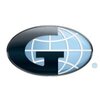
Gallagher
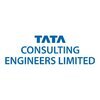
TCE
Calculate your in-hand salary
- Home >
- Interviews >
- Management Dynamics Interview Questions >
- Management Dynamics Management Executive Interview Questions

